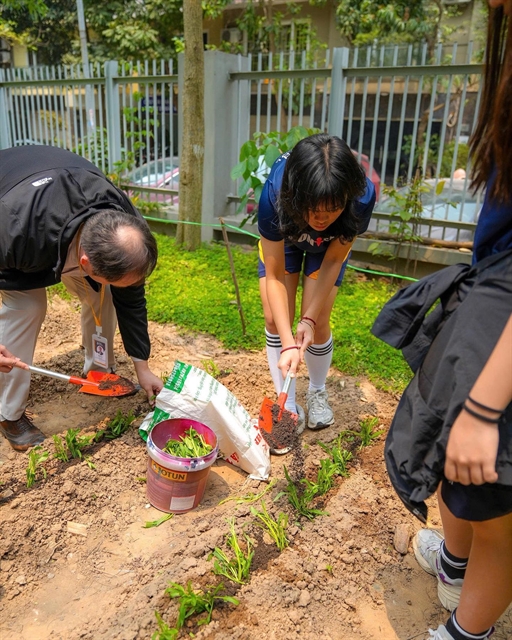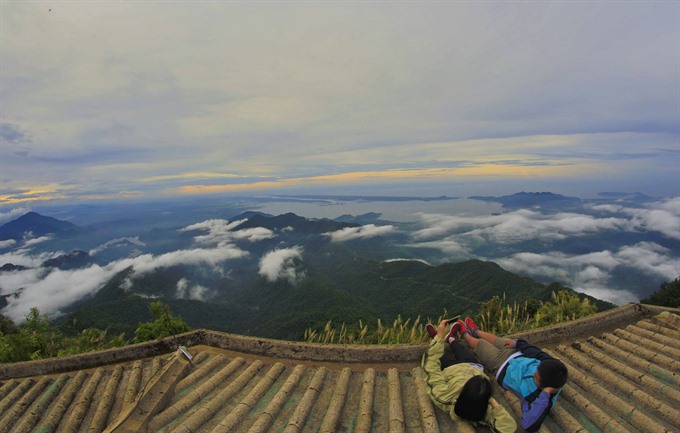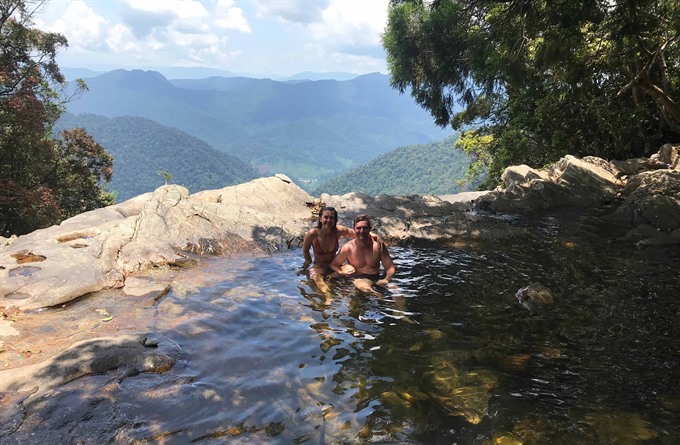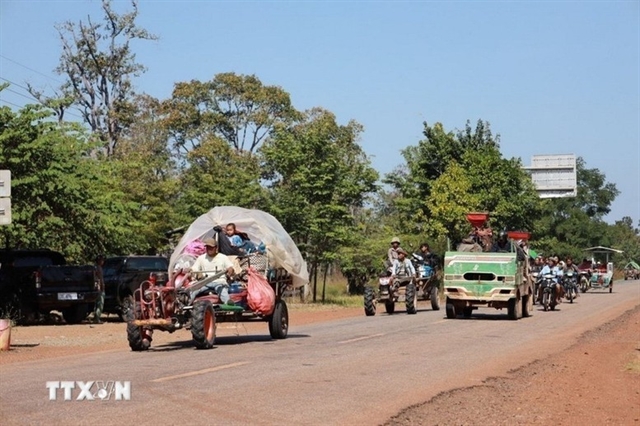 Environment
Environment

A fresh controversy has broken out as local authorities in the central province of Thừa Thiên-Huế plan to take almost 400 hectares from the core zone of local Bạch Mã National Park to develop a tourism complex.
 |
| Visitors look out from Bạch Mã Peak. The mountain is regarded as having one of the most beautiful peaks in the country. — VNS Photo Nguyễn Văn Sum |
THỪA THIÊN-HUẾ — A fresh controversy has broken out as local authorities in the central province of Thừa Thiên-Huế plan to take almost 400 hectares from the core zone of local Bạch Mã National Park to develop a tourism complex.
The park is a protected area under Vietnamese environmental laws and is a typical biosphere centre of the country.
At a seminar on Saturday, the provincial People’s Committee introduced to environmental, construction and cultural experts a proposal to build a 387.8ha ecotourism complex on the top of Bạch Mã Mountain, which is part of the rich biodiversity park.
The complex will also include two cable lines. According to Wimberly Allison Tong & Goo, an architectural firm headquartered in the
The
 |
| Two visitors enjoy the cool lake at Bạch Mã Peak. Most of foreign visitors choose the site for trekking in nature. — VNS Photo Đặng Đình Sỹ |
However, experts have expressed concern over the impacts to the nature in the park, demanding a reconsideration of how the proposal would affect the local economy.
Participants at the seminar demanded the advisor recalculate the expected number of total annual visitors to the complex, saying one million was too large for a site that does not allow tourism operations for the six months of the rainy season due to difficult weather.
The huge complex would mean large infrastructure would have to be built in the park, creating more pressure on its natural areas, experts said.
“It’s necessary to calculate the contribution of the complex to local economy,” said Trần Ngọc Chính, chairman of the Việt Nam Urban Development Planning Association, adding that the province had learnt lessons from the construction of villas scattered in different places on Bạch Mã Mountain over a hundred years ago by the French.
Lã Thị Kim Ngân from the Việt Nam Architecture Association said the complex planners must consider lowering the percentage of land they’re seeking to use in the national park.
Nguyễn Vũ Linh, the park’s deputy director, said the mountain has very high annual rainfall and humidity, recommending downsizing the project. Linh added that there is a great deal of thunder and lightning on the mountain peak during the rainy season, so the planners need to reconsider the complex location.
“Construction of the complex at vulnerable places, like in Đỗ Quyên waterfall [in the park], will affect the biodiversity heavily,” he said.
 |
| A villa built by the French over a hundred years ago. Locals insisted that improving services at these villas is enough for tourism development in Bạch Mã. — VNS Photo Nguyễn Văn Sum |
“Ecotourism is part of the adaptation of conservation into the development context. It’s also meaningful to educate people about the biodiversity values,” said Professor Nguyễn Ngọc Lung, deputy head of the Research Institute for Sustainable Forest Management and Forest Certification.
“With the complex, will the park authorities be able to fulfill the responsibility of forest protection as defined by the Government?” Lung questioned, saying he did not see any proof that the proposed complex would meet ecotourism criteria.
Lung and other conservationists also demanded a detailed environmental impact assessment (EIA) report on the project.
Researcher Nguyễn Xuân Hoa, former director of the local Department of Culture and Information, said building the complex at the core of the national park would damage nature.
Hoa added that the focus in exploiting the existing French villas is enough for the development of tourism in Bạch Mã.
Đặng Đình Sỹ, who has run a wild trekking tour in Bạch Mã for years, told Việt Nam News that the park as well as the nature there is not suitable for mass tourism.
“Visitors choose to come there to trek, to enjoy the nature in a typical biosphere as well as to soak in the magic light of sunrise and sunset at the height of 1,400m above the sea level. But definitely not to stay in modern hotel facilities,” he said.
Sỹ also showed consensus with researcher Hoa, saying the key to tourism development in Bạch Mã is to make full use of 139 French villas at the site.
The Bạch Mã National Park was formed in 1991 with expanded area of nearly 37,500ha. It is home to more than 4,500 flora and sauna species, including endemic and endangered species listed by International Union for Conservation of Nature. — VNS




